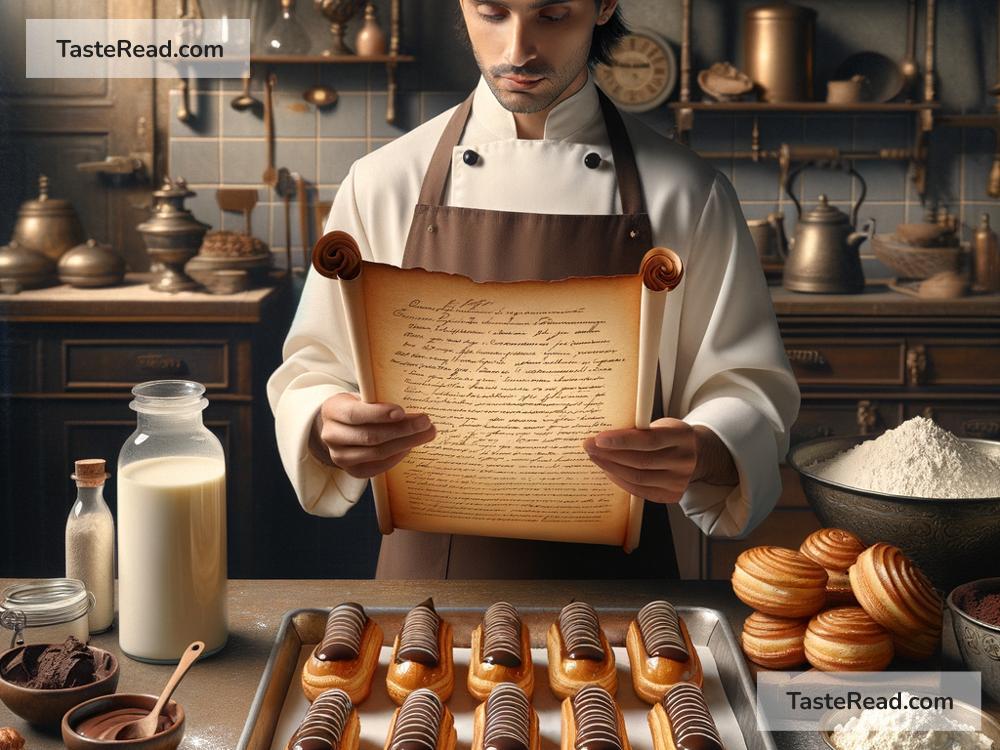The Origins of the First Éclair in Folklore
Éclairs are one of the most beloved pastries in the world today. With their crisp, light shell, creamy filling, and smooth chocolate glaze, they seem almost magical—too perfect to have been created by mere mortals. But where did éclairs really come from? How did these little masterpieces of dessert first catch the world’s imagination? The real answer lies in history and skilled baking, but legends and folklore have also given us colorful tales about the origins of éclairs.
Let’s explore the stories, myths, and facts behind this pastry that has stolen hearts across nations.
What Are Éclairs?
Before getting into their origin, let’s first define what an éclair is. The word “éclair” comes from the French language and means “flash of lightning.” This name might have been inspired by the speed at which people devour this delightful treat—as quickly as a flash! An éclair is a long, thin pastry made from choux dough, filled with cream, and topped with icing or glaze. While modern éclairs are most often filled with vanilla cream, custard, or chocolate ganache, they’ve grown to include countless varieties.
Though éclairs are often associated with French cuisine, their history has murky beginnings, and folklore adds even more charm to their creation story.
The Official History of Éclairs
Many food historians trace the invention of éclairs back to 19th-century France. Marie-Antoine Carême, a famous French chef often considered the founder of haute cuisine (high-class cooking), is usually credited with creating the éclair. Carême lived in the early 1800s and revolutionized pastry-making by designing beautiful, intricate desserts. One of his creations was a pastry he called “pain à la duchesse,” which later evolved into the éclair we know today.
Carême’s éclairs were filled with cream and topped with shiny icing, much like modern éclairs. The French embraced the dessert immediately, and over time, it became popular worldwide. But while Carême may hold the credit in culinary history books, folklore provides far more whimsical and intriguing explanations of where éclairs came from.
The Folklore Behind the First Éclair
In European folklore, pastries and desserts are often linked to magical moments, heroic deeds, and fortunate accidents. The éclair, as fanciful as it looks, has inspired several tales about its mythical beginnings.
1. The Lightning Pastry
One common story ties éclairs to their name, which means “lightning” in French. According to this legend, the éclair was born during a thunderstorm in a small village in France. A baker accidentally spilled chocolate over a row of pastries filled with custard during a sudden flash of lightning. The combination of chocolate, cream, and choux was so delicious that it was immediately given the name “éclair,” symbolizing the quick, electrifying moment it was created.
This tale captures the feeling of éclairs being magical—a spark of pure culinary brilliance that appeared out of nowhere.
2. A Gift From a Fairy
Another legend tells the story of a kind-hearted baker who lived in a quiet French town hundreds of years ago. This baker loved experimenting with pastries and sought to make something that would bring joy to everyone. One day, a mysterious fairy visited his bakery, asking for food. The baker gave the fairy his finest bread, butter, and simple desserts.
Moved by his generosity, the fairy offered the baker a gift—a magical recipe for éclairs. The baker followed the instructions, creating the elegant pastry filled with cream and topped with chocolate glaze. The townspeople adored the dessert, calling it “the fairy’s gift.” Over time, éclairs became known far and wide.
3. The Feast of Nobles
Another story links éclairs to the grandeur of royalty. In this tale, a king in France held an extravagant royal feast and challenged his chefs to create a dessert that matched the elegance of his palace. The head chef, under immense pressure, crafted a pastry using choux dough shaped into long, elegant bars. He filled the pastry with cream and iced it with chocolate for a luxurious finish. The king was so impressed that he declared the pastry to be fit only for royalty. Although éclairs today are universally enjoyed, they still carry echoes of this regal origin in their refined appearance.
Why Folklore Matters
These tales might not be historically accurate, but they remind us that food is more than something we eat—it’s tied to imagination, culture, and storytelling. Folklore often gives us a sense of wonder about everyday things, like éclairs, and connects us to the creativity of our ancestors. It’s fun to think that éclairs could have come from a fairy’s recipe, a lightning strike, or royal inventiveness.
Modern Éclairs
Despite their mysterious and magical origins in folklore, éclairs today are rooted firmly in the art of baking. Modern chefs experiment with flavors beyond the traditional chocolate glaze and vanilla filling. You can find éclairs filled with matcha cream, salted caramel, pistachios, fruit custards, or even savory fillings like cheese and herbs. They’ve come a long way from their origin stories but remain as enchanting as ever.
Conclusion
Whether their origins lie with Marie-Antoine Carême in the 19th century or in the magical moments described in folklore, éclairs are more than just pastries. They represent creativity, joy, and the ability to turn a few simple ingredients into something extraordinary. The next time you bite into an éclair, take a moment to appreciate its history and imagine the magic surrounding its creation. After all, desserts this perfect deserve a little wonder!


